History of the Oud in Middle Eastern Music
The history of the oud in Middle Eastern music is found not only in books, it’s alive in every note you hear from Cairo to Casablanca. This short-necked, pear-shaped string instrument has been at the center of Middle Eastern music for more than 1,300 years.
You’ll find it in street-side cafés, in grand orchestras, and in the quiet corners of spiritual rituals. It doesn’t just play melodies, it holds memory.
You’re not just reading about an old instrument. You’re about to step into a deep, living tradition. The oud shaped entire music systems, influenced instruments like the lute and guitar, and gave voice to centuries of emotion, poetry, and protest.
In this article, you’ll uncover how the oud was born, how it traveled across cultures, and why it still matters in today’s music. You’ll meet the people who shaped its sound and see how this simple wooden body became the soul of a region.
Let’s dig into the sound that shaped a civilization and still speaks without needing words.
How did the oud originate and where did it first appear?
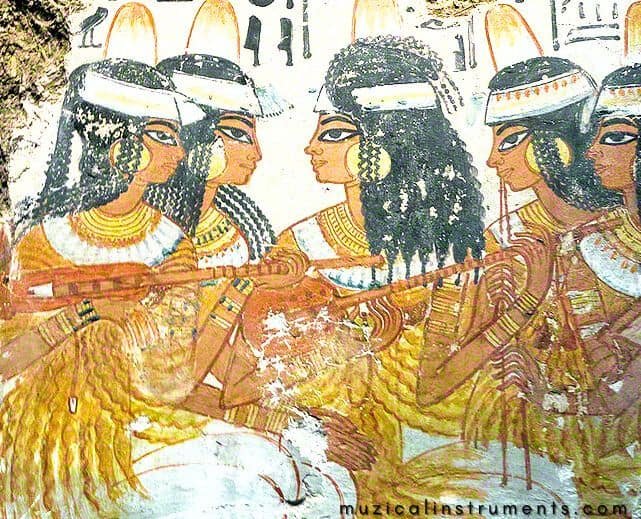
The history of the oud begins in Mesopotamia, modern-day Iraq, more than 3,500 years ago. Carvings from the Akkadian Empire (circa 2350 BCE) show figures holding instruments that resemble a small oud. But these early versions looked more like long-necked lutes than the short, pear-shaped body we know today.
The name “oud” comes from the Arabic word for “wood.” While some scholars believe this name refers to the wooden pick used to pluck the strings, others say it simply highlights the material of the instrument itself. This might sound simple, but the oud’s design wasn’t an accident. Early oud makers shaped the body like a halved gourd, allowing for deep resonance and warm tonal color features that still define the instrument today.
By the 7th century CE, the oud had become a staple in the music of the Umayyad Caliphate. This was the golden age of Arab music. Baghdad and Damascus were not just political centers; they were hubs of culture, where science, philosophy, and the arts thrived.
A key figure in this era was Ziryab, a Persian musician who revolutionized the oud in 9th-century Córdoba, Spain. He added a fifth string, used an eagle’s feather instead of a wooden pick, and shaped Andalusian music for centuries.
Expert Insight:
“Without the innovations introduced by Ziryab, it’s likely the oud would have remained a regional instrument. He globalized it.” – Dr. Kamal Salhi, Ethnomusicologist, University of Leeds
So, the oud’s origin isn’t just about geography, it’s a story of cultural exchange, craftsmanship, and constant evolution.
What role did the oud play in Islamic Golden Age music?
During the Islamic Golden Age (8th–13th centuries), the oud became much more than an instrument, it was part of intellectual life, a key element in the History of the Oud. Music was studied as a science, and the oud was considered the “prince of instruments.” Scholars like Al-Kindi and Al-Farabi wrote extensively about its acoustics, structure, and emotional effect.
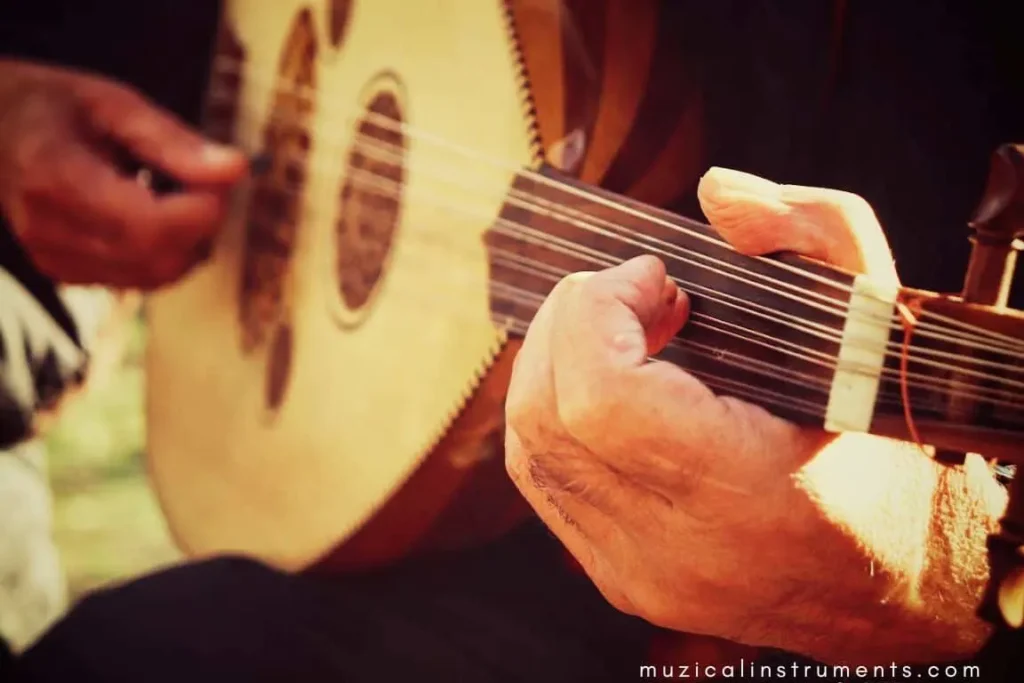
Al-Farabi’s famous treatise, Kitab al-Musiqa al-Kabir (The Great Book of Music), discusses how the oud could be used to influence mood, health, and even moral behavior. He described how each string corresponds to elements of the soul. One could say that in this era, the oud wasn’t just music, it was medicine and philosophy combined.
Here’s where the instrument’s structure became more refined. The fretless fingerboard allowed for microtonal expression, something Western instruments couldn’t achieve. This let musicians play maqamat modes central to Arab music with incredible emotional range.
Innovations in Oud Design During the Islamic Golden Age
| Feature | Description | Impact |
|---|---|---|
| Fifth String | Added by Ziryab | Expanded tonal range |
| Fretless Neck | Traditional since early models | Allows quarter tones for maqam |
| Eagle Feather Pick | Replaced wooden plectrum | Provided smoother sound |
Pro Tip:
If you’re trying to understand why the oud sounds so different from a guitar, it’s this microtonality. The oud speaks in subtle bends and sliding tones perfect for emotional expression.
In short, the Islamic Golden Age didn’t just preserve the oud it elevated it.
How did the oud influence music in Turkey, Iran, and North Africa?
Though the oud is rooted in Arab tradition, it quickly spread across the Islamic world. As the Ottoman Empire rose, so did the oud’s presence in Turkish music. But each region made it its own.
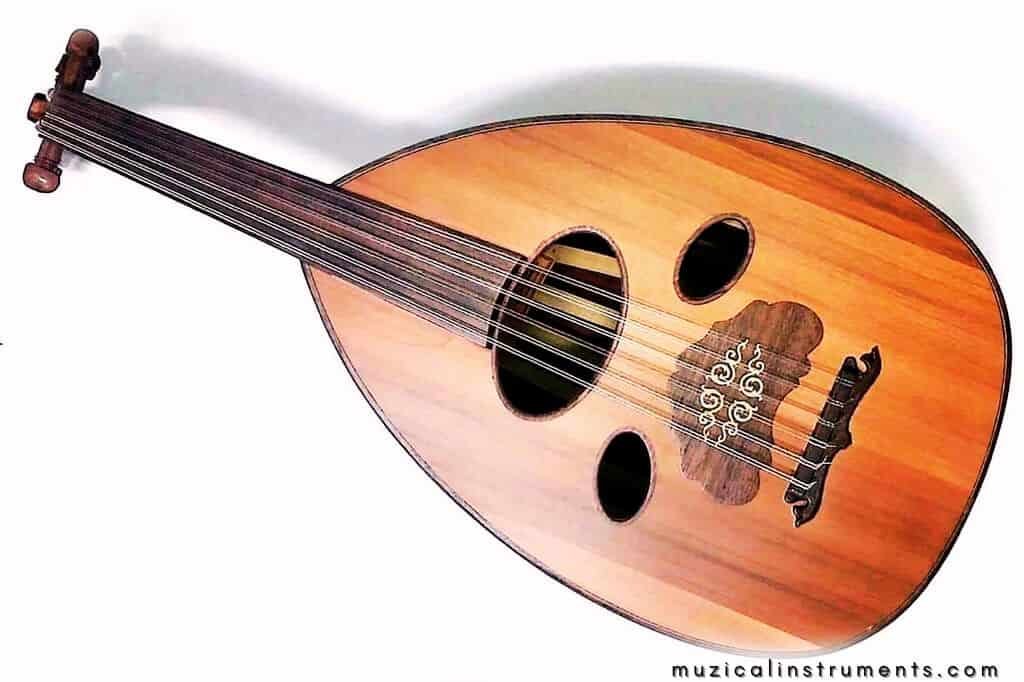
In Turkey, the oud became central to Ottoman classical music. Musicians like Tanburi Cemil Bey adapted it to blend with other instruments like the ney (flute) and kanun (zither). The Turkish oud has a longer neck and a slightly different tuning system. It’s tuned in perfect fourths, unlike the Arabic version which uses mixed fourths and fifths.
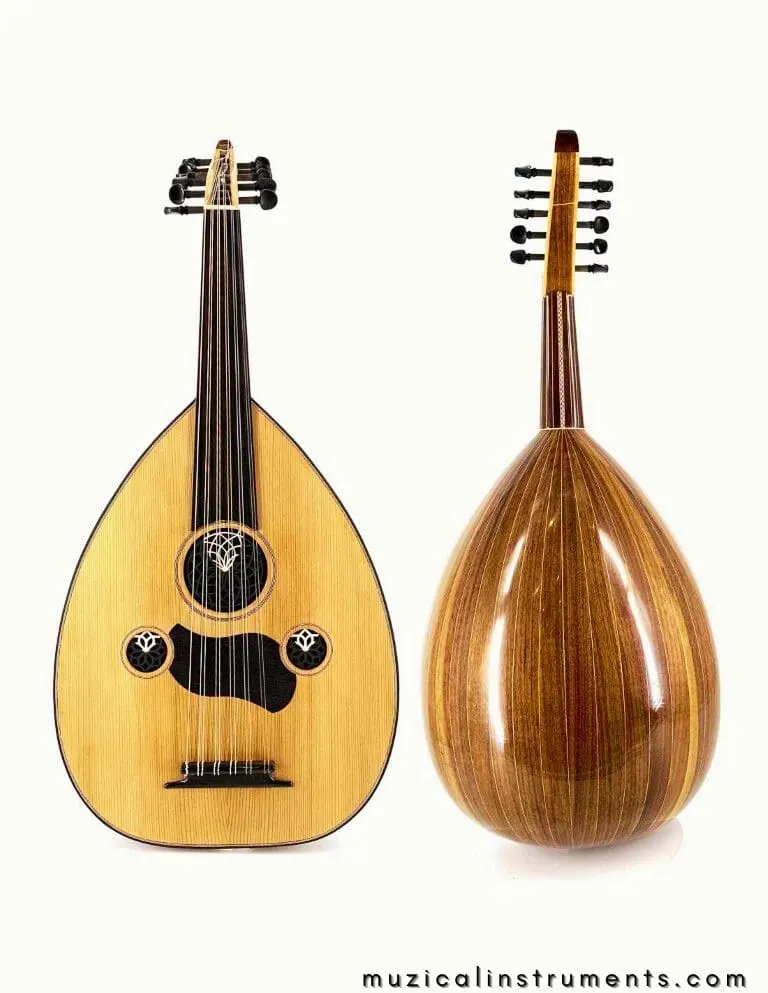
In Iran, the oud was known as the barbat. This version was a favorite in Sasanian courts and Persian poetry. It later influenced the development of the setar and tar, which are still popular today. While the oud fell out of favor in Persian classical music for a time, it has seen a revival in recent decades, thanks to artists like Hossein Behroozinia.
In North Africa, especially Morocco, Algeria, and Tunisia, the oud was fused with Andalusian classical and Berber folk music. The rhythms became more syncopated, and the playing style more percussive.
Regional Variations of the Oud
| Region | Name/Type | Key Features |
|---|---|---|
| Arab World | Oud | Deep bowl, fretless, 11–13 strings |
| Turkey | Türk Udu | Longer neck, brighter tone, Turkish tuning |
| Iran | Barbat | Compact body, used in early Persian music |
| North Africa | Maghrebi Oud | Lighter build, distinct tuning |
Expert Insight:
“Every oud tells a different story. Turkish ouds sing. Arabic ouds cry. Iranian barbats whisper.” – Mahmoud Turkmani, Lebanese Oud Virtuoso
These regional variations didn’t fragment the oud, they made it more versatile, more expressive, and more universal.
Who are the most influential oud players in modern history?
To understand the oud’s continued importance and its modern History of the Oud, you need to meet the artists who redefined it in recent times. These players didn’t just preserve tradition, they broke rules, built bridges, and created new genres.
1. Farid El Atrache (Syria/Egypt)
A legend of the mid-20th century, El Atrache blended classical oud with Egyptian pop and film music. His solos were emotional, complex, and instantly recognizable.
2. Munir Bashir (Iraq)
Often called the “King of the Oud,” Bashir introduced the instrument to global audiences. His improvisational skill and spiritual depth helped bring Iraqi maqam to Western concert halls.
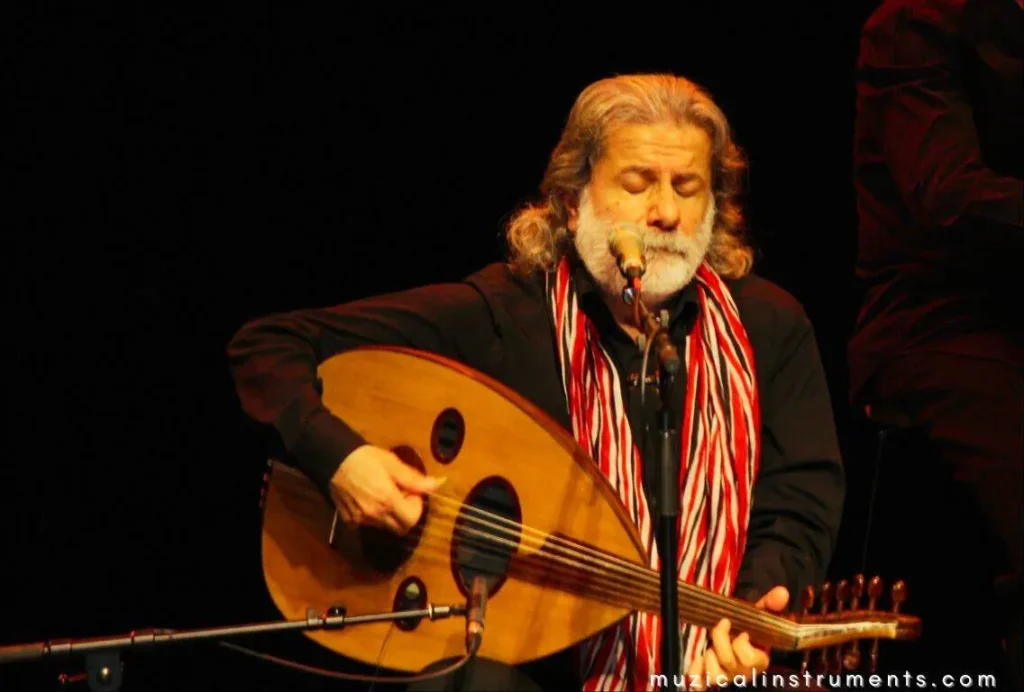
3. Marcel Khalifé (Lebanon)
Known for combining oud with poetry and political themes, Khalifé turned the instrument into a voice of resistance and hope, especially during Lebanon’s civil war.
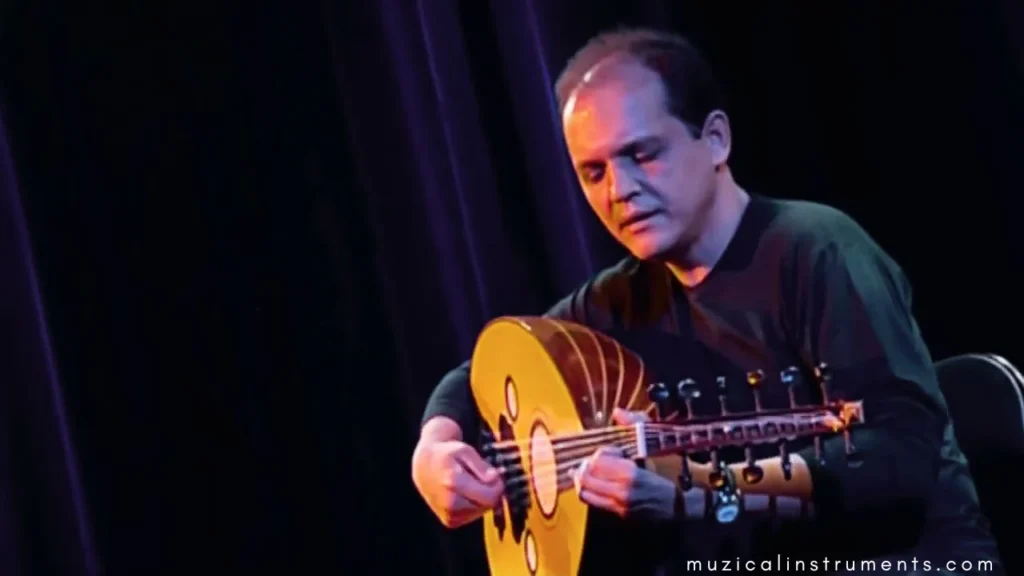
4. Anouar Brahem (Tunisia)
A master of fusion, Brahem mixes oud with jazz, Indian, and electronic music. His albums with ECM Records brought the oud into minimalist and ambient genres.
Pro Tip:
If you want to hear the oud in a modern, global setting, listen to Brahem’s Le Pas Du Chat Noir. It’s haunting, subtle, and unlike anything you’ve heard.
These players prove the oud is not stuck in the past. It’s evolving—and still speaking to new generations.
Why does the oud still matter in today’s music?
In a world flooded with digital sounds, the oud still holds a unique place. It connects you to history, culture, and emotion in ways no machine can replicate. You hear it in film scores, fusion bands, and even meditation music. From Cairo cafes to Parisian jazz clubs, its voice remains relevant.
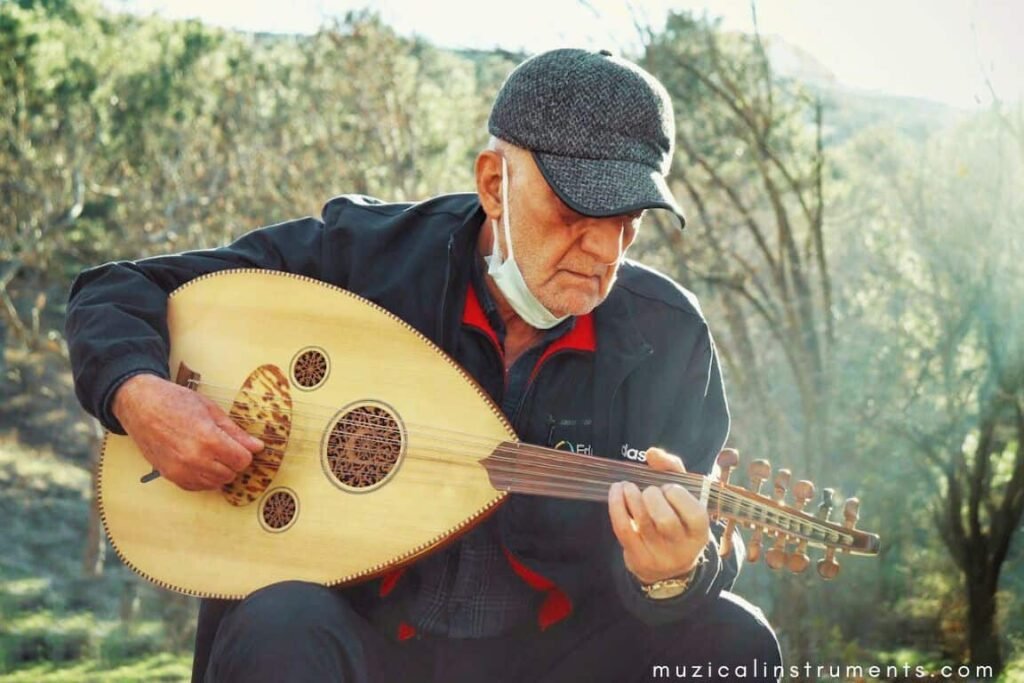
The oud also plays a central role in music therapy and spiritual practices. In Sufi ceremonies, it’s used to guide zikr (remembrance) rituals. The instrument’s tones are said to calm the nervous system and help with trauma recovery, something modern neuroscience is starting to back up.
In education, more conservatories around the world are adding oud programs. Students learn not just technique but also maqamat, rhythmic cycles, and cultural context. This ensures the instrument stays alive not as a museum piece, but as a living art.
Contrarian Viewpoint:
Some argue that fusion waters down the oud’s cultural power. But others believe cross-genre collaboration is how traditions survive. What do you think?
Whether you’re a musician, a listener, or a cultural explorer, the oud has something to teach you: about patience, about beauty, and about where you’ve come from.
Final Thoughts
The history of the oud in Middle Eastern music isn’t just a story of strings and wood, it’s a journey through empires, philosophies, and personal expression. From ancient Mesopotamia to modern jazz stages, the oud has played a role in shaping not only sound but identity.
Now that you know where it comes from and why it matters, what will you do with that knowledge?
Maybe you’ll listen to an oud performance with new ears. Maybe you’ll learn a maqam. Or maybe, you’ll pick up the instrument yourself.
Whatever you choose, one thing’s clear, the oud isn’t fading. It’s still playing, still changing, and still waiting for you to hear it.
If you’re exploring more traditional instruments from the region, understanding the difference between Shurangiz and Setar gives you a fuller picture of Middle Eastern string sounds.
FAQ: The History of the Oud
Q1. What is the oud and how is it different from a guitar?
The oud is a fretless, short-necked string instrument with a rounded back. Unlike a guitar, it doesn’t have frets, so you can slide between notes and play quarter tones, those emotional, bending sounds common in Middle Eastern music. Most ouds have 11 or 13 strings, arranged in paired courses. And while a guitar projects a bright, crisp tone, the oud’s sound is warmer and deeper, almost like it’s singing from the chest.
Q2. Where did the oud originate?
The oud traces back to ancient Mesopotamia which is now Iraq around 2350 BCE. Archaeologists found carvings showing early versions of the instrument in Sumerian and Akkadian art. Over time, the oud evolved in the Arab world, spread through the Islamic empire, and influenced stringed instruments across Europe and Asia.
Q3. Is the oud still used in modern music?
Yes, and not just in traditional music. The oud shows up in jazz, fusion, film scores, and even electronic music. Artists like Anouar Brahem, Dhafer Youssef, and Le Trio Joubran are blending oud with new styles and sounds. Many younger musicians are also using the oud to reconnect with cultural roots in fresh, personal ways.
Q4. What is the oud used for besides entertainment?
Beyond performances, the oud plays a role in spiritual practices, especially in Sufi rituals where it helps guide meditative chants. It’s also used in music therapy to help with emotional healing and stress relief. Some therapists believe its rich, earthy tone creates a calming effect that goes beyond words.
Q5. How hard is it to learn to play the oud?
If you already play guitar or another string instrument, you’ll recognize some basics. But the fretless neck and Middle Eastern scales (maqamat) do take time to get used to. It’s less about technical speed and more about feel, learning how to express emotion through each note. Most players say once you connect with it, you won’t want to stop.
